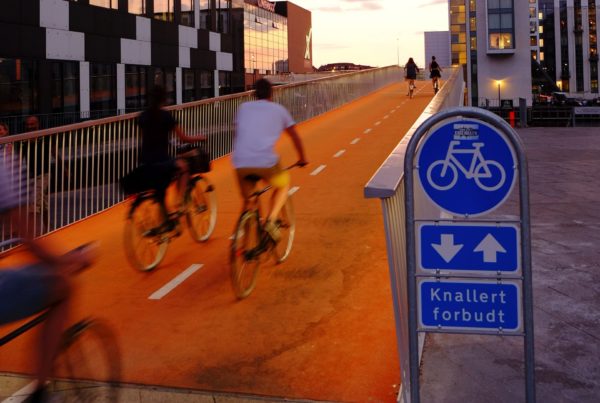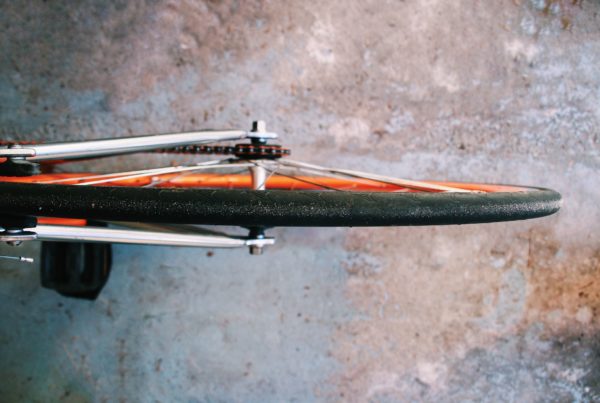This article was first published in the July 2016 issue of Plaintiff magazine (plaintiffmagazine.com).
Shifting the driver-centric focus in disputed-liability bike and pedestrian cases
The lawyer felt ill reading the letter. Not surprised, but saddened. Both with the case specifically and humanity in general. The case involved a driver who struck the lawyer’s client from behind. She in her car. He on his bicycle. At 65 miles per hour, in broad daylight. The cyclist died from the massive force involved. The driver admitted to the police that she had taken her eyes off the road for 8 to 10 seconds prior to the collision.
The letter was from the driver’s insurance company. It stated, “Our review of the incident indicates Mr. Smith was in our insured’s lane of travel instead of on the right side of the fog line. Furthermore, he was wearing dark clothing. As a result, Mr. Smith is legally responsible for causing this incident.” Read another way, the letter said, “Your guy was on a bike. Jurors have a bias against folks on bikes. We’re going to play that card and see if we can get away with it.”
A brief history of street use
Let’s go back in time to the beginning of the century. Roads were considered public spaces. Not in the way they are now – places to move cars – but public space for all. Horses, pedestrians, streetcars, bikes – they shared the roadway and traveled at lower speeds than what we are used to with cars. Children – without any irony – were told to play in the street. They used the streets as play space.
Then something changed. Automobiles arrived. Cars went faster than other road users. As cars zipped down the streets, people were not expecting car speeds. Automobiles spread in popularity. They struck more and more road users. Those road users – overwhelmingly pedestrian and overwhelmingly children – died in large numbers. Drivers were blamed. Cities considering taking measures to reduce these injuries, including mechanically limiting automobile speeds.
The automobile manufacturers and related businesses recognized this as a problem. Not the deaths themselves. The problem was driver blame and anti-car sentiment from the vast majority who, at that time, did not drive. That sentiment undercut the spread of the automobile. So, the automobile industry joined forces under a banner called Motordom. Motordom waged a public relations war. The message: roads were for cars. People, bicyclists, horses needed to stay out of the way.
The American Automobile Association coined the term “jay walking” and began a campaign against it in Los Angeles. Back then, a “jay” was a very derogatory term for a bewildered rustic unfamiliar with city life. Prior to this campaign, people were simply folks using the public road space – crossing it when they needed to do so. After this, anyone not crossing at a designated time and place became a jay walker, invading the car’s provenance.
Shifting the modal lens
People see road use through the eyes of their mode of travel, a modal lens. Most people drive. Therefore, most have a driver’s perspective. To them, cyclists are irritating hazards. Pedestrians appear out of nowhere, getting in the way. The road belongs to cars.
Most people do not think of a road as public space. That is starting to change. Parklets – outdoor people spaces taking over parking spaces – are one example. Ciclavias – roads closed to traffic on a given day (oftentimes Sunday) and instead used for walking, biking, and living – are another. Add in the urban reality that bicycling is frequently the fastest way to get from point A to B and one understands the recent dramatic increase in bicycle commuting.
But most people are very surprised when they learn that roads were taken over by cars in recent history. That learning is an opportunity in disputed-liability cases. Jurors, as long as they are not being talked down to, like learning. One can use this history to overcome the overwhelmingly driver-oriented focus. How and where is it employed? One area is in the demand package or mediation brief. Take the defense position to task when they push the roads-are-for-cars agenda. The next is jury selection, if one is lucky enough to have the luxury of a little time. Ask if people think
of roads as shared spaces. Do they know the history of road use?
Expert testimony is the next avenue. In cases employing accident reconstruction, human factors, or traffic engineering, the expert is a springboard to inform the jury on road history and shared space. Finally, closing argument. Use it to counter the “he’s on a bike on a road, therefore it must be his fault” argument.
Outro
Back to our lawyer, his cyclist, and the flat-world insurance company. They went to mediation. The lawyer made a brief presentation on road history and roads as shared spaces. This then led into comparative fault – and why there was no comparative fault here. The case settled shortly before trial, with the insurance company acknowledging – by the size of the resolution – that their driver caused the collision.




